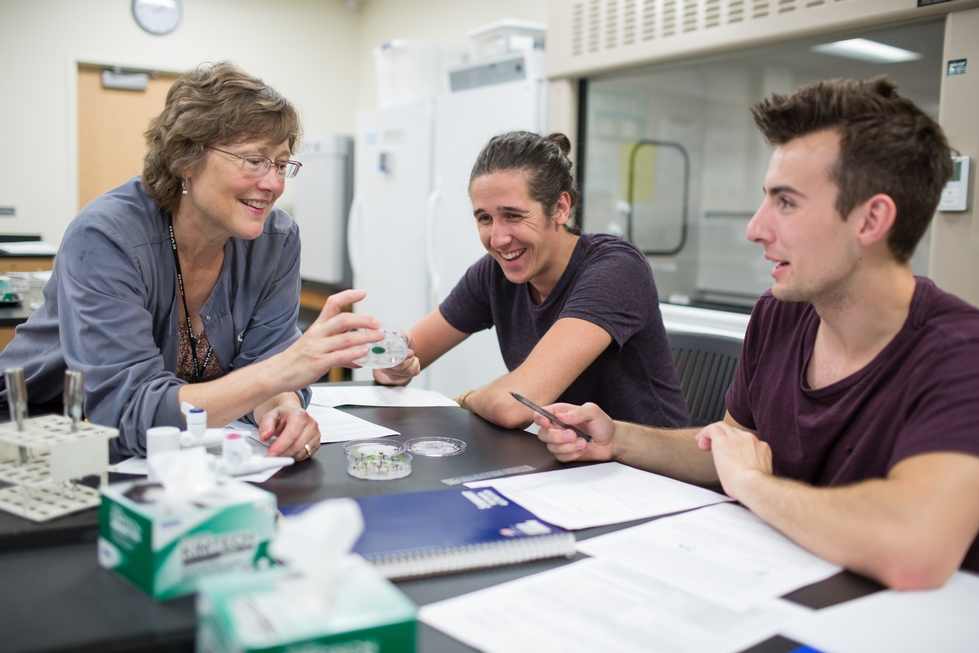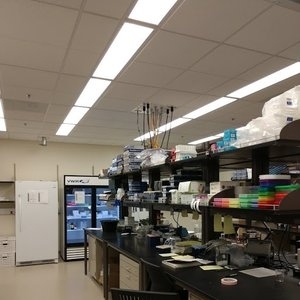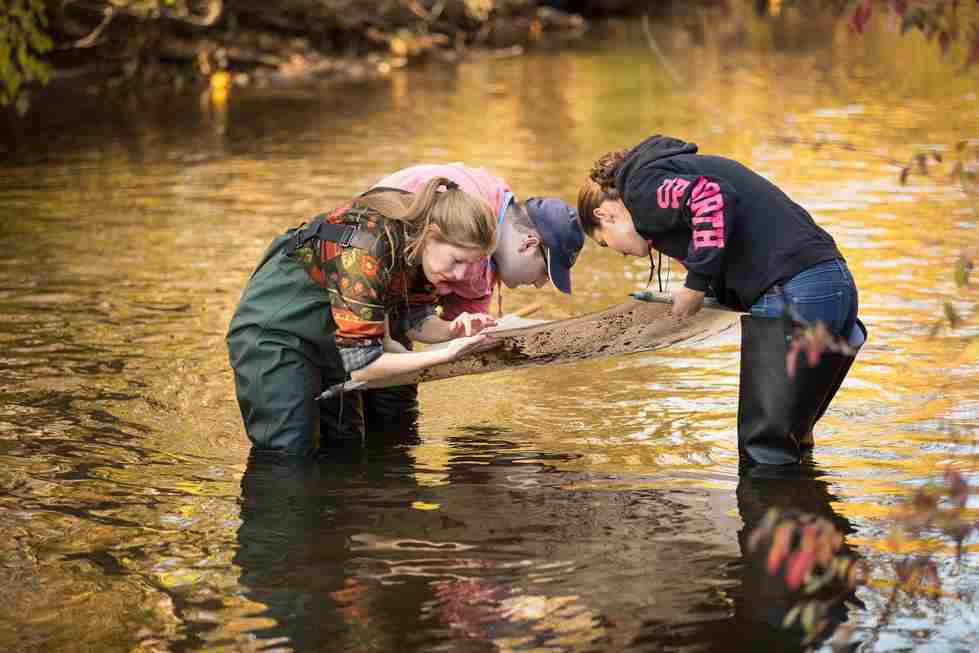Our Facilities
The Biology Department is housed in the P. Douglas Kindschi Hall of Science, which opened in August 2015. Biology courses are taught almost exclusively in Kindschi Hall. The building is LEED Gold Certified and contains the following:
- 6 teaching classrooms (24 - 48 seats)
- 3 case study rooms (72 or 96 seats)
- 15 spacious teaching laboratories
- 16 fully-equipped research laboratories
- 3000 sq. ft. greenhouse with six distinct environmental zones
- 8 student study spaces
- 160 faculty and staff offices (Biology, Cell and Molecular Biology, Movement Science, and Information Technology)
- 10 conference rooms
- 2 shared graduate student office suites
- 1 green roof and other features to manage storm water
[1513182195].jpg)

GREENHOUSE
The Barbara Kindschi Greenhouse, a 3,000 square foot facility, houses the Biology and Cell & Molecular Biology Department’s teaching collections along with space for multiple research and course projects. The greenhouse consists of six separately controlled rooms to ensure optimal growing conditions for all plants. These rooms are tied to the state-of-the-art control system ARGUS. It has a large head house for storage and behind the scenes work, as well as a separate room holding four custom-designed environmental chambers supporting research and course work in the Biology and Cell and Molecular Biology Departments.
Visit our Instagram page to see the latest plants in bloom and fun happenings in the greenhouse!
CLEAN LAB DNA SUITE
The Department of Biology operates a clean lab DNA facility on the 3rd floor of KHS. A clean lab DNA facility is a specialized environment designed to process and analyze DNA samples with minimal risk of contamination. Such facilities adhere to stringent cleanliness and containment standards to ensure accurate and reliable results, particularly for sensitive applications like forensic analysis, ancient DNA studies, or medical diagnostics. Key features of the KHS clean lab DNA suite include structural design and layout, positive air pressure and laminar flow hoods in the sample processing area, antistatic surfaces, and environmental controls. This environment is crucial for fields requiring ultra-precise DNA analysis, where even trace contamination can compromise results. The combination of advanced technology, rigorous protocols, and cleanroom practices ensures high-quality data generation. The clean lab DNA facility is part of the Molecular Archaeology Laboratory and Archive run by Professor Alex Nikitin.
[1734037710].jpg)
TEACHING LABS
The Biology Department places emphasis on hands-on learning, and utilizes 13 teaching labs within Kindschi Hall to foster this learning approach. Our students get experience in conducting field work, using computer software programs for data collection and analysis, identification of plants and animals, genetic and molecular lab techniques, inquiry-based scientific methods, and much more. Each of our labs hold a maximum of 24 students creating an environment for safe, focused learning.
The Biology Department takes our student’s safety seriously, and follows the College of Liberal Arts and Sciences lab safety standards.


RESEARCH LABS
Research space is made available for faculty and their students to pursue their scholarly research activities. If you are interested in participating in research, you should contact those faculty members whose research most interests you. The majority of the research spaces are shared to hold up to four researchers and their students, affording them the opportunity for collaboration and shared resources. Some research spaces hold specialized research equipment for individual researchers, including one computational research lab. Undergraduate and graduate students benefit from facilities with state-of-the-art equipment, and faculty that are passionate about their work. Kindschi Hall also houses a newly equipped microscopy suite for use in coursework and research, and all research is supported by the College of Liberal Arts and Sciences Dean’s Office. Learn more about research lab operations.
FIELD WORK
Many of the Biology and Natural Resources Management courses involve significant time working in the field. Additionally, many of our faculty’s research interests are field based. West Michigan provides a great environment for many areas of study including aquatic biology and ecology, conservation biology, restoration ecology, and environmental sustainability.


ZOOLOGY MUSEUM AND HERBARIUM
Located on the first floor of Kindschi Hall, the Zoology Museum houses our preserved mammal, bird, reptile, amphibian, fish, invertebrate, and insect collections. It is a workable space as well as a display area where passersby can view many of the specimens we use in our coursework. The Herbarium is also a working lab, which houses our pressed plant collection, which has also been digitized by Dr. Tim Evans.
KINDSCHI HALL OF SCIENCE ARTWORK
The GVSU Art Gallery collects, manages, exhibits, and interprets the University's art collection to foster experience learning and art engagement within the GVSU community. Interaction with art can inform social discourse, encourage civic dialogue, foster creative and critical thought, and provide avenues for personal reflection. It is for these reasons that art is everyone at GVSU. In the P. Douglas Kindschi Hall of Science, there are over 450 works of art. These pieces provide learning opportunities across many different fields of study with emphasis in this building given to global studies and biology. All of the artwork in this building may be viewed online.


